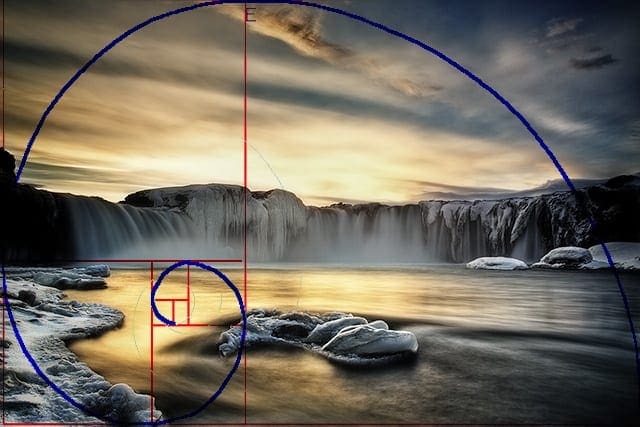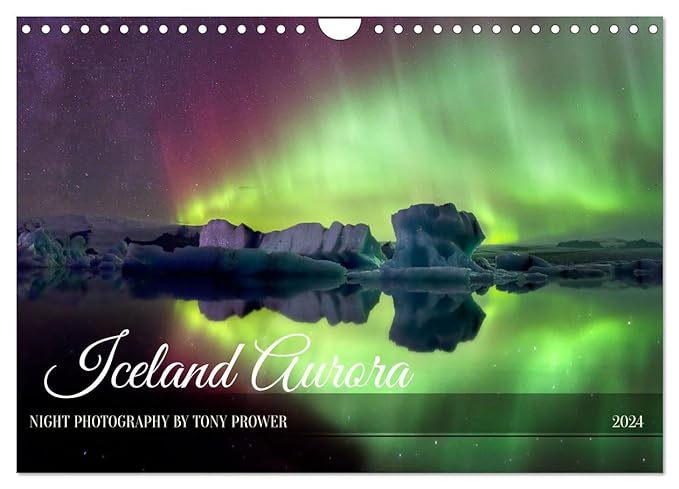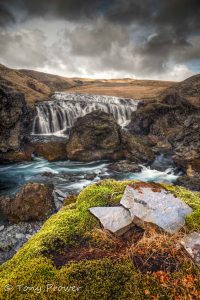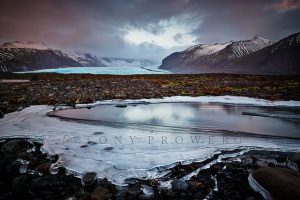The rules of composition are guidelines for producing a well designed image. ‘Guidelines’ are probably a better description than ‘rules’ as they just help us as a kind of starting point. Do not break the rules until you are an expert at following them. You need to understand how they work and how they help you create great compositions. Learn the rules and then break them only if it will create a better image than if you followed them.
Rule of thirds
Divide your frame into 9 equal parts and 4 internal lines. These lines and the intersections become powerful places to place areas of interest. In a typical landscape scene, you would place the horizon on the higher horizontal line. If the horizon is obscured, then estimate where it would be.
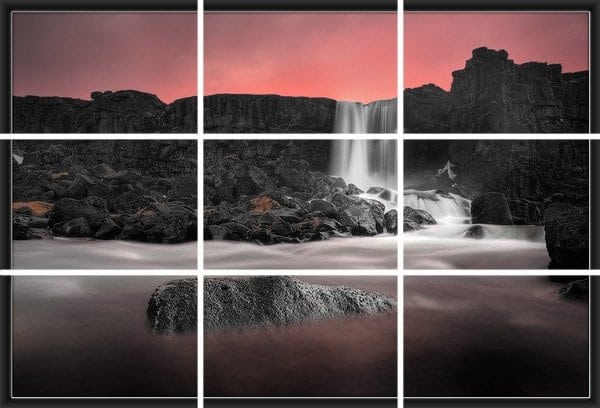
The flow of water closely follows the right and bottom lines, the bottom third contains all the rock detail, the top third contains the sky. Three of the four intersections contain areas of interest.
The idea behind the rule of thirds is to prevent lines in the image from bisecting the image (cutting it in half). Therefore avoiding symmetry.
Putting key features on or near these guide lines helps to keep import elements of the landscape from being too close to the edge of the frame.
It also reflects the position of our eyes as we naturally survey a natural scene.
Breaking the rule of thirds.
You might break this rule if you wanted to communicate a message of symmetry in your image. If there is a perfect reflection or a part of the sky mirrors patterns found in the landscape, then you might want to compose for symmetry.
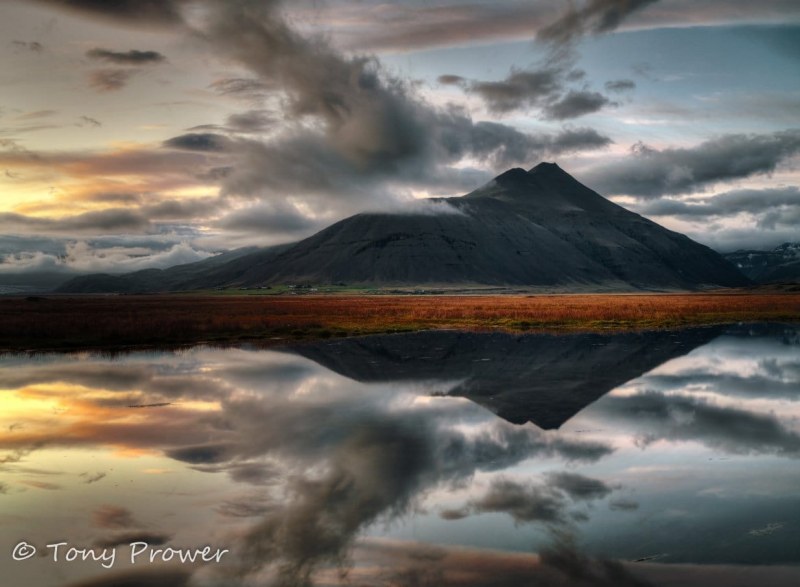
Rule of Simplicity
The rule of simplicity is about isolating your subject by surrounding it with lots of space. Photography could be described as being about uncluttering the complex world. When photographing people or animals, it is best to have some space in the direction of their gaze, a moving object should have space between it and the viewer.
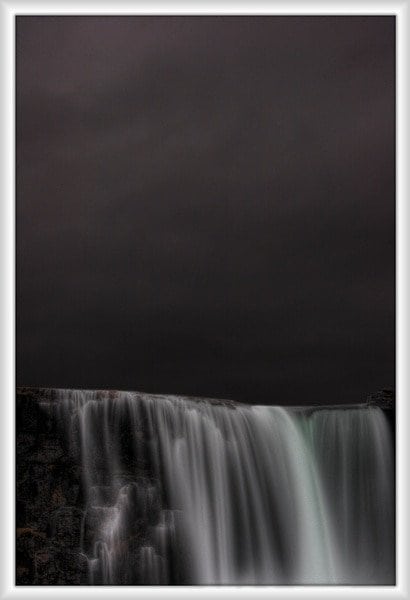
This is the same Icelandic waterfall as you see in the first image. The composition follows thirds but could best be described as following the rule of simplicity.
Another technique for isolating an object and creating simplicity is to use a narrow ‘Depth of field‘ so that everything in the object’s background is blurry. This is achieved with very large apertures such as f/2.8 or f/1.4 and is know as ‘Bokeh‘.
Sometimes a scene doesn’t allow you to include space. If you have to break the rule of simplicity try to follow the ‘Rule of Odds’.
Rule of Odds
This rule states that odd number of objects in a scene is more aesthetically pleasing than an even number of objects. This is again to avoid the mistake of symmetry. Triangles are good to consider when arranging objects in a scene.

Get the whole subject in the frame
If it is possible and the shape of the object allows, you should try to get the whole object in the frame. If you leave too much of a subject cropped then the eye will naturally be led to the edge of the frame and will be looking for the rest, your viewer will be trying to complete the image.
Break this rule in obvious situations such as portrait photography where you might include just head and shoulders. Also, if you want to leave the viewer imagining the rest of the object like the waterfall above. If you must amputate your subjects legs it is better to avoid doing this at the joints, i.e. elbows and knees.
Leading the eye.
Photographers use objects with strong lines or patterns to lead the viewer into a scene. These objects will lead the eye into the image and give the viewer a welcoming feeling.

Leading the eye in a picture can be achieved by placing a point of interest in the center of the image or by creating a path or line of sight that leads the viewer’s eye to the main focal point of the image. You can also draw attention to the main subject of the image by using contrast, color, and depth of field.
Golden Ratio
The golden mean is a aesthetic principle based on the ideal mathematical ratio of approximately 1:1.618, which is considered to be aesthetically pleasing.
The golden ratio is a beautiful mathematical concept. It is similar to dividing the image into thirds, but follows a more complex formula. The golden ratio states that the ratio of a to b should be the same as the ratio between a and a + b. The frame is constantly divided like this and a curve is draw to tie the divisions together. Confused? me too until I read this. The difference between the Golden Ratio and the rule of thirds is that the rule of thirds is man-made and hence fashionable, whereas the Golden Ration is universal. The ratio can be observed in all Natural object throughout the universe.
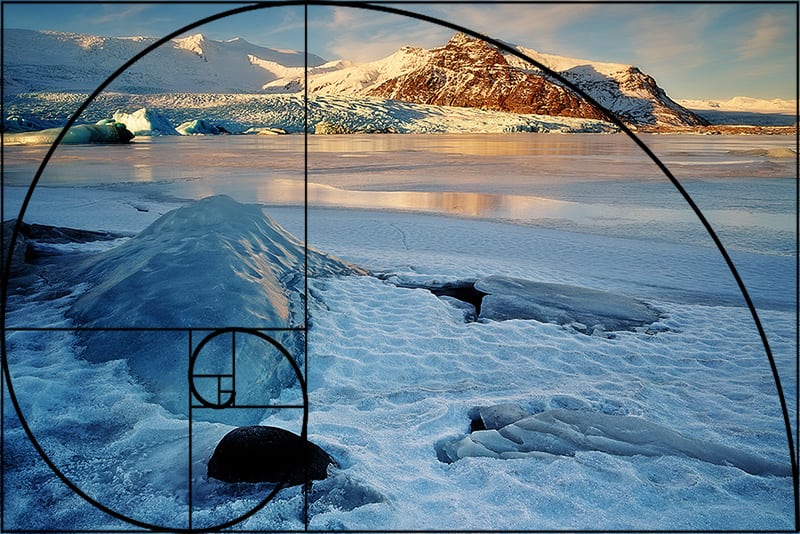
This nature photo doesn’t follow thirds, but the main points of interest fall right onto the golden mean.
Cropping for composition
There are many reasons why you might want to crop an image. You might want to make a smaller file size, you might have straightened an image and you need to trim the corners. Or maybe you want to improve the composition. Here are some ways you can crop your nature photos to improve their composition, using post-processing software such as Photoshop or Gimp..
Rule of thirds
You may have a good picture but you want to get the composition perfect in terms of composition rules such as the golden mean or the rule of thirds.
Open Adobe Photoshop and go to Edit=>Preferences=>Guides, Grids, slices and Count…

Open the Guides & Grids dialogue box.

In the ‘grid’ section, enter the figures as shown above.
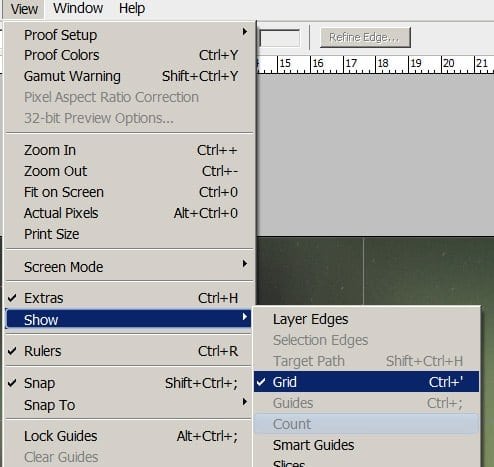
You can also use the shortcut (Ctrl + ‘) to turn the grid on and off quickly.
The rule of thirds grid should appear over your image.
Golden Mean
The golden mean is much more complex. There is no preset grid so we will steal a template from here.
Right click on the image and save it to your hard drive. Now open your image in photoshop.
Import the golden mean template and paste it over the top of your image. Resize it to suit.
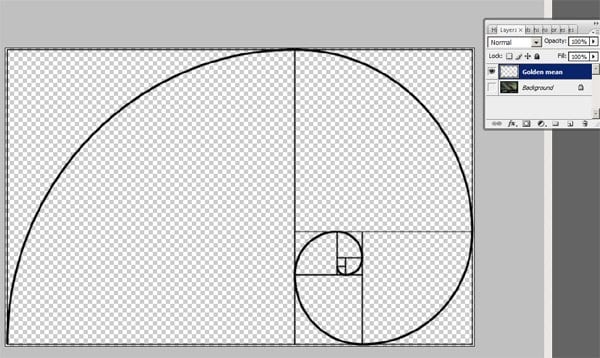
As this is a transparent file, you should be able to see your image underneath when you make it visible.
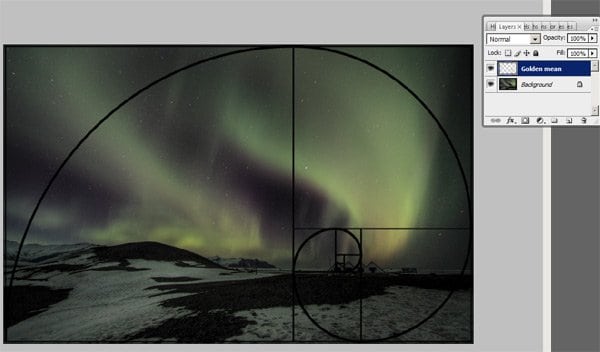
A lovely example of the areas of interest falling right on the golden curve. I cropped the image in line with the golden box.
Conclusion
Breaking the rules of composition is not always breaking all the rules. As you may have noticed, sometime it is a matter of applying a different rule. For example. breaking the rules of symmetry could mean adopting the rule of thirds or the Golden Ratio. If you understand the rule of thirds or the Golden Ratio well then you can break the rule of symmetry effectively. These landscape composition guidelines can help to train the nature photographer’s eye. When you start considering ratios and geometry between different objects in a landscape scene, you are closer to making art.
